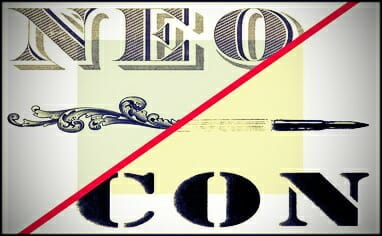
I posted a story noting that some terms are losing their meaning in the run-up to the Republican primaries. This term was abused during “Dubyas” Presidency.
The term is “Neo-Con,” and the article deals with Rubio via National Review, “If Marco Rubio Is ‘Establishment’ Then ‘Establishment’ Has Lost Its Meaning,” a must read… here are a couple excerpts:
I must confess that I’m confused. I still have vivid memories of the tea-party revolution of 2010, when insurgent conservative candidates toppled incumbents and establishment favorites from coast to coast. This was the year of Rand Paul in Kentucky, Ron Johnson in Wisconsin, and Nikki Haley in South Carolina.
Perhaps most momentous of all, it was the year of Marco Rubio, who overcame long odds to beat Charlie Crist, a man who’s since proven himself to be exactly the kind of soulless politician the tea party exists to oppose. Since his election, Rubio has delivered, becoming one of the most consistent and eloquent conservatives in the Senate. My colleague, Jim Geraghty, has outlined his stratospheric ratings from the American Conservative Union, National Rifle Association, National Right to Life, and the Family Research Council.
In fact, Rubio is largely responsible for the single most effective legislative attack on Obamacare….
[….]
Here’s the reality: In the battle — launched in 2010 — between the tea party and traditional GOP powers, the tea party largely won. The contest between Rubio, Cruz, and Trump is a fight between Tea Party 1.0, Tea Party 2.0, and classic American populism. And each one of these candidates would need traditional Republican or “establishment” support in the general election.
If Rubio is “establishment,” the term has lost any real meaning. He’s a consistent conservative whose positions and ideology largely align with whomever his critics prefer, Cruz included. He’s a tea party champion who effectively expelled Charlie Crist from the Republican party and dealt a serious blow to Jeb Bush. For the most part, a fight between Rubio and Cruz is a fight over matters of tone and style, not substance. A fight between Rubio and Trump is a battle between a conservative and a populist. Unless something dramatic happens between now and the New Hampshire primary, the establishment has already lost this cycle. Only the insurgents remain.
Another article worth reading is via Powerline, and continue the misuse narrative:
…Throwing the neocon label around isn’t an argument; it’s name-calling. Cruz argues well enough that he shouldn’t have to rely on name-calling. It must have gone over well with focus groups.
Name-calling is bad enough. To make matters worse, as Goldberg explains, the name doesn’t really fit the view Cruz disagrees with — support of military intervention to bring about regime change.
Goldberg says that “neoconservatism is a product of the Cold War.” But his article suggests that it is actually the product of a debate over domestic policy.
As I understand it, neoconservatism is the product of the rise of the New Left and the failure of President Johnson’s Great Society. The New Left was a movement of juveniles (including me). It left more mature leftists with two obvious alternatives: first, embrace the New Left and have a second childhood; second, applaud the spirit of the New Left but reject its more outrageous tactics and flirtation with the likes of Chairman Mao, and double down on democratic socialism.
Neoconservatives rejected both alternatives. They were appalled by the spirit of movement with a clear totalitarian strain (manifested, for example, by attacks on academic freedom). In addition, the Great Society experiment, animated in part by the thinking of democratic socialists like Michael Harrington, helped move them well to the right of their socialist former comrades.
Goldberg reminds us that the most important early neoconservative foreign policy manifesto — Jeane Kirkpatrick’s famous 1979 article in Commentary — was a brief against democracy promotion in authoritarian states friendly to the U.S. Moreover, Kirkpatrick was not a supporter of the war waged by President George W. Bush in Iraq. Indeed, she said she had serious reservations about it.
It’s true, of course, the most neoconservatives supported that war, in many cases avidly. But the decision to invade Iraq was not made by neoconservatives, and neither was the decision to remain in post-invasion Iraq rather than “get the heck out” (as Cruz likes to say). Bush, Dick Cheney, and Donald Rumsfeld were not part of the neoconservative movement. As for the Congress that voted to authorize war, only a handful of members were.
Neoonservatives (by now referred to, disdainfully and even venomously, as neocons by people who knew little about the movement) became scapegoats for the war. In part, as Goldberg says, this was because they continued to defend it and, above all, advocate that we win it. Some neocons pushed for the successful Iraq surge of 2007. For this, they should be commended….

